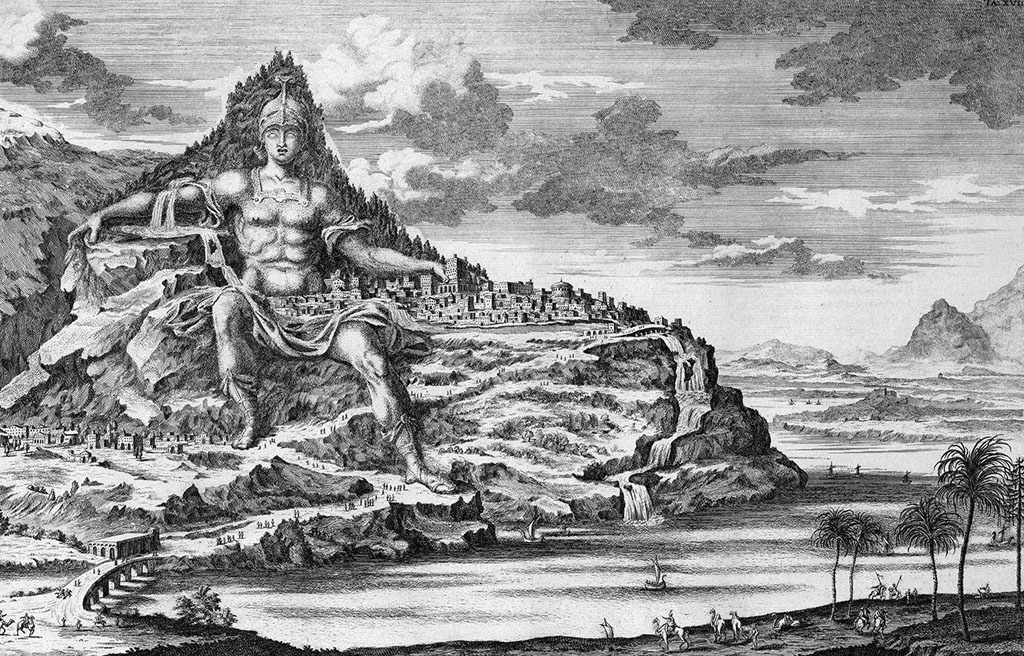01-05-2018 // NARRATIVE URBANISM

Dinocrates’ proposal for Mount Athos
Narrative Urbanism
By Bernd Upmeyer
One important outcome of our last MONU issue #28 on “Client-shaped Urbanism” was the realization that in order to create better cities, we need to improve the communication among everybody involved in the creation of cities, whether they are clients, developers, municipalities, architects, urban designers, or the users of cities, to name just a few. Especially for architects and urban designers, one way to make themselves understood better, is to use the power of “narratives”, helping them to connect not only to experts and intellectuals in the field, but to everybody else too. To find out what such urban and architectural narratives might look like today – and what they were like in the past – how they can be crafted, where they may be used and how narratives can help improving our cities in general is one of the main aims of the upcoming issue of MONU that we call “Narrative Urbanism”.
In the history of human civilisation, narratives and storytelling have always been an important aspect of culture and all kind of forms of human creativity, whether art, literature, theatre, music, film, photography, architecture, or urbanism, as long as a sequence of events was presented. Thus, we would like to look into the history of “Narrative Urbanism” and its diverse appearances, functioning, consequences, and impacts as well. The urge to narrate appears to be embedded strongly in human nature. We all seem to be chronic storytellers. And architecture and urbanism are no exception: narratives remain relevant until our days, famously articulated, for example, by Rem Koolhaas, whom Wouter Vanstiphout declared as the high priest of storytelling in an interview called “Acrobatic Narratives“ that we did with him for MONU #15. However, we believe that the power of narratives to improve our communication and thus our cities has not yet been exhausted and still needs to be brought to a higher and more effective level.
But we also want to be critical and understand when urban and architectural narratives drift towards populism and are reduced to one-liners. We want to explore the topic of “Narrative Urbanism” in the most multifaceted way possible that should have nothing to do with, for example, the one-dimensional storytelling of city branding campaigns. Because, as Bart Lootsma stated in another interview with us entitled “Beyond Branding”, published in MONU #20, cities are much more complex than that. Narratives can be embodied in historical buildings that are the setting for myths, sages and fairy tales. Narratives are also the setting for dreams and desires and cities are collections of our stories. Their buildings, streets, bridges and squares carry the imagination of the people living in them.
Therefore, we wonder what the tools and methods to create “good” urban and architectural narratives are today. Where can they be most useful and where should they be doubted? To what extent have architects and urban designers already used – and still use – narratives in their work and where did that lead to? What role can information and communications technology, but also social media play in “Narrative Urbanism”? What can we learn from the use of urban narratives of the past? How have they changed over the years? When we look today at urban narratives, can we still consider them as narratives or might they all have become merely simplifications of reality and marketing tools?
Title: Narrative Urbanism
Author: Bernd Upmeyer
Date: May 2018
Type: Call for Submissions, MONU #29
Publications: MONU – Magazine on Urbanism
Publisher: Board Publishers
Location: Rotterdam, The Netherlands